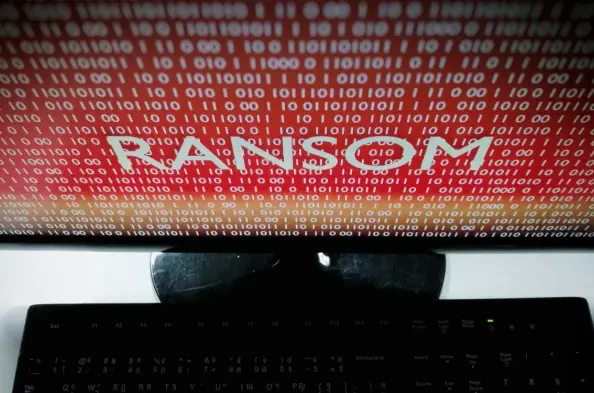In today’s rapidly evolving cybersecurity landscape, the ability to adapt quickly to new threats is crucial. Vernon Yai, a seasoned expert in data protection and governance, sheds light on the latest innovations in ransomware delivery methods and the implications for cybersecurity professionals worldwide.
Can you explain the significance of the Phorpiex botnet in the recent LockBit ransomware campaign?
The Phorpiex botnet’s role in the LockBit ransomware campaign represents a significant pivot from typical methodologies. Traditionally, ransomware attacks require human intervention for lateral movement and network infiltration. However, the Phorpiex botnet automates this process, enabling direct and widespread deployment of LockBit onto infected machines. This marks a substantial shift, streamlining the attack and potentially increasing its impact on organizations.
How does this new method of leveraging botnets differ from traditional human-operated ransomware attacks?
Unlike human-operated attacks, which often involve detailed planning and execution phases to penetrate deeper into networks, this new method utilizes automation to optimize the ransomware delivery process. By eliminating the need for manual control, attackers are able to bypass stages like lateral movement, reaching the targeted systems more swiftly. This automation reduces operational complexity and exposure risk, making their operations more efficient.
What are the key steps involved in the attack chain for this LockBit campaign?
The attack chain begins with carefully crafted phishing emails that include malicious ZIP attachments. These attachments exploit various file formats like SCR and LNK files, depending on the variant, to initiate the infection. Once the ZIP file is opened, the LockBit downloader seeks communication with command-and-control servers, although evidence of such connections remains elusive. These steps illustrate a tightly woven attack framework, leveraging both old and new techniques to effectively execute ransomware attacks.
How does the attack use phishing emails to initiate infections?
Phishing emails serve as the initial delivery method, deceiving recipients into opening ZIP attachments. The emails are designed to appear legitimate, often mimicking trusted sources to ensure the ZIP files are opened, thus allowing for the embedded malicious content to execute and begin the infection process. This strategy capitalizes on social engineering tactics to breach defenses.
What role do ZIP attachments play in the infection process?
ZIP attachments are crucial components within the phishing emails, containing the payload required to release LockBit ransomware. These files may include SCR or LNK formats, which are instrumental in executing the malicious downloader scripts. By disguising the payloads within these common file types, attackers successfully infiltrate systems while bypassing initial detection measures.
What challenges does the automated ransomware delivery approach present for cybersecurity professionals?
The automation of ransomware delivery complicates traditional detection methods, as it can blur lines between routine malware activity and targeted attacks. Cybersecurity professionals must adjust their strategies to effectively identify and defend against these streamlined attacks, requiring heightened vigilance and adaptation to anticipate similar future innovations.
How do the LockBit downloader’s actions align with known methods of operation?
The downloader’s behavior aligns with standard LockBit tactics, attempting to connect with previously identified command-and-control servers. Despite unsuccessful connections in observed instances, the downloader maintains consistency in its operational patterns, reinforcing LockBit’s established threat profile.
Can you describe the structure and operational patterns of Phorpiex variants like TWIZT and GandCrab?
Phorpiex variants maintain a distinctive operational structure, initiating infections via phishing emails and ZIP attachments. The TWIZT variant uses mechanisms like JPEG marker files and mutex creation to prevent reinfection, while GandCrab introduces advanced anti-analysis features, such as sandbox detection and disabling security software, to fortify against scrutiny.
What implications does this campaign have for the broader threat landscape, particularly regarding LockBit’s adaptation strategies?
This campaign illustrates LockBit’s agility and resilience in the face of global law enforcement efforts. By adopting automated delivery methods, they showcase an ability to innovate and sustain operations, potentially influencing the broader ransomware ecosystem. Other groups may view LockBit’s success as a blueprint for similar adaptations.
Despite efforts to dismantle LockBit, how does the group manage to remain operational and continue innovating?
LockBit thrives due to its relentless pursuit of innovation and adaptability. As global law enforcement applies pressure, they evolve by exploiting technological advances, such as botnet-driven distribution methods, ensuring continued operational capabilities and advancing threat strategies.
What recommendations do security researchers offer to defend against automated ransomware attacks?
Experts suggest strengthening email security measures, including advanced filtering systems, to prevent phishing exploits. Continuous monitoring of system changes and suspicious downloads, alongside reinforcing endpoint security protocols, can yield effective defenses against these sophisticated botnet-driven attacks.
How does the use of automated, botnet-driven tactics complicate detection efforts?
The shift to botnet-driven tactics blurs distinctions between widespread malware and targeted attacks, challenging conventional detection frameworks. By automating distribution, attackers can mask traditional indicators of compromise, necessitating advanced anomaly detection and response strategies from cybersecurity teams.
In what ways are LockBit affiliates reducing time and risk with their new approach?
By automating ransomware delivery, LockBit affiliates minimize the time spent on manual intrusion efforts and mitigate associated risks. This tactical evolution allows for rapid dissemination of ransomware across targets, reducing exposure and enhancing operational efficiency within the threat landscape.
What is your forecast for the future of automated ransomware attacks?
Automated ransomware attacks are likely to become increasingly prevalent as threat actors seek more efficient, less risky methods to disseminate malicious software. As cyber defenses improve, attackers will continuously adapt, relying on automation and integration of novel technologies to outpace mitigation efforts, leading to increasingly sophisticated and challenging security threats.






